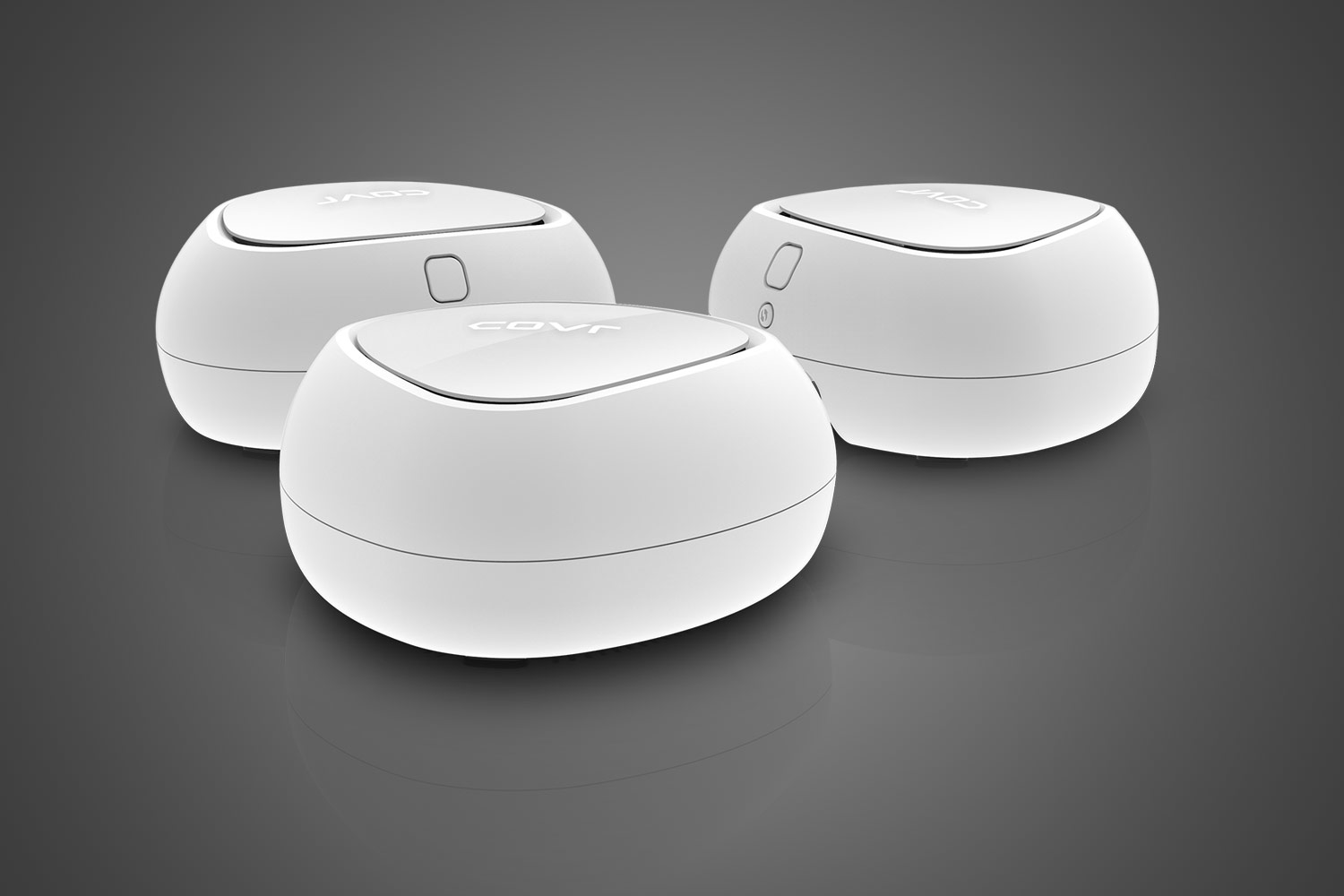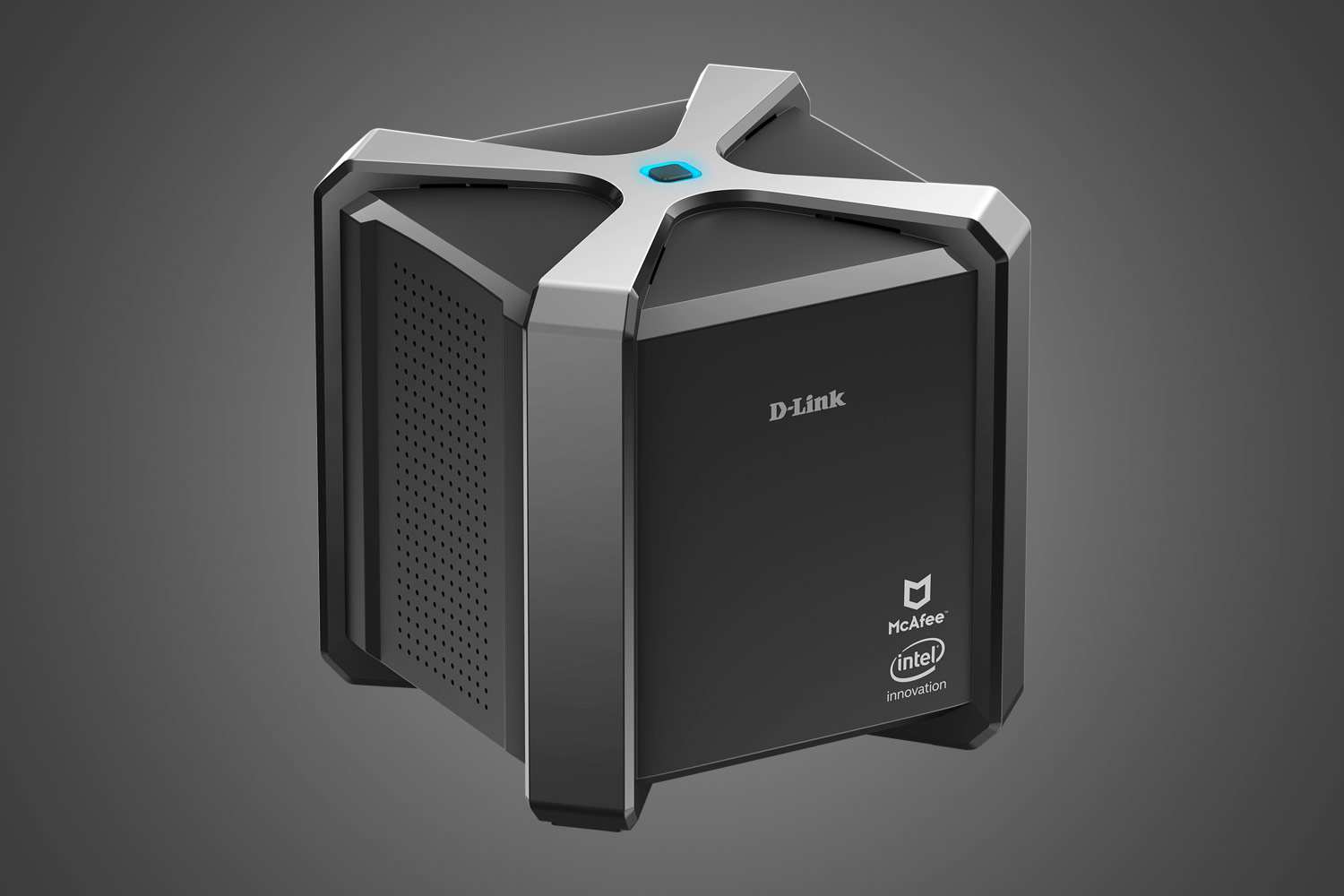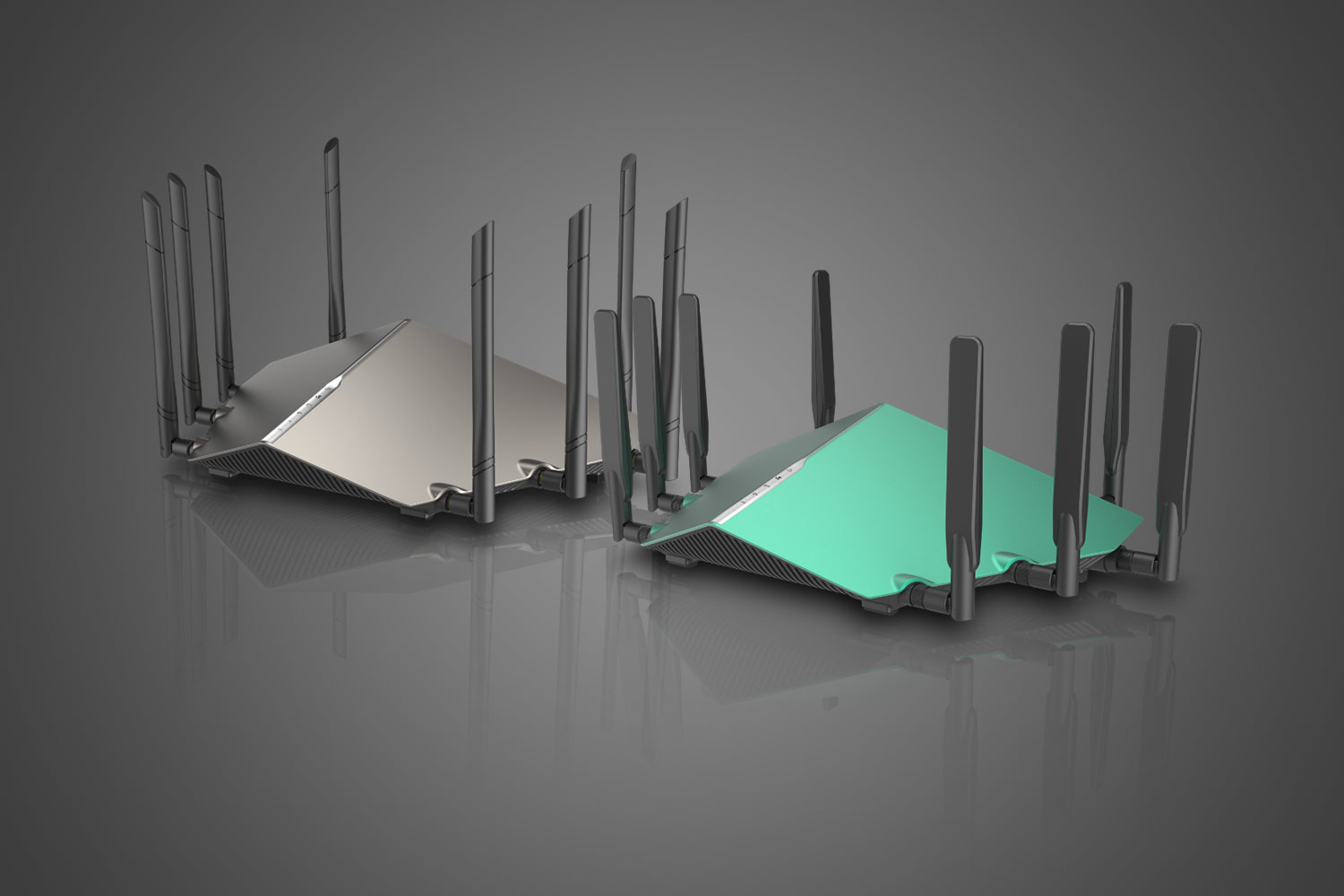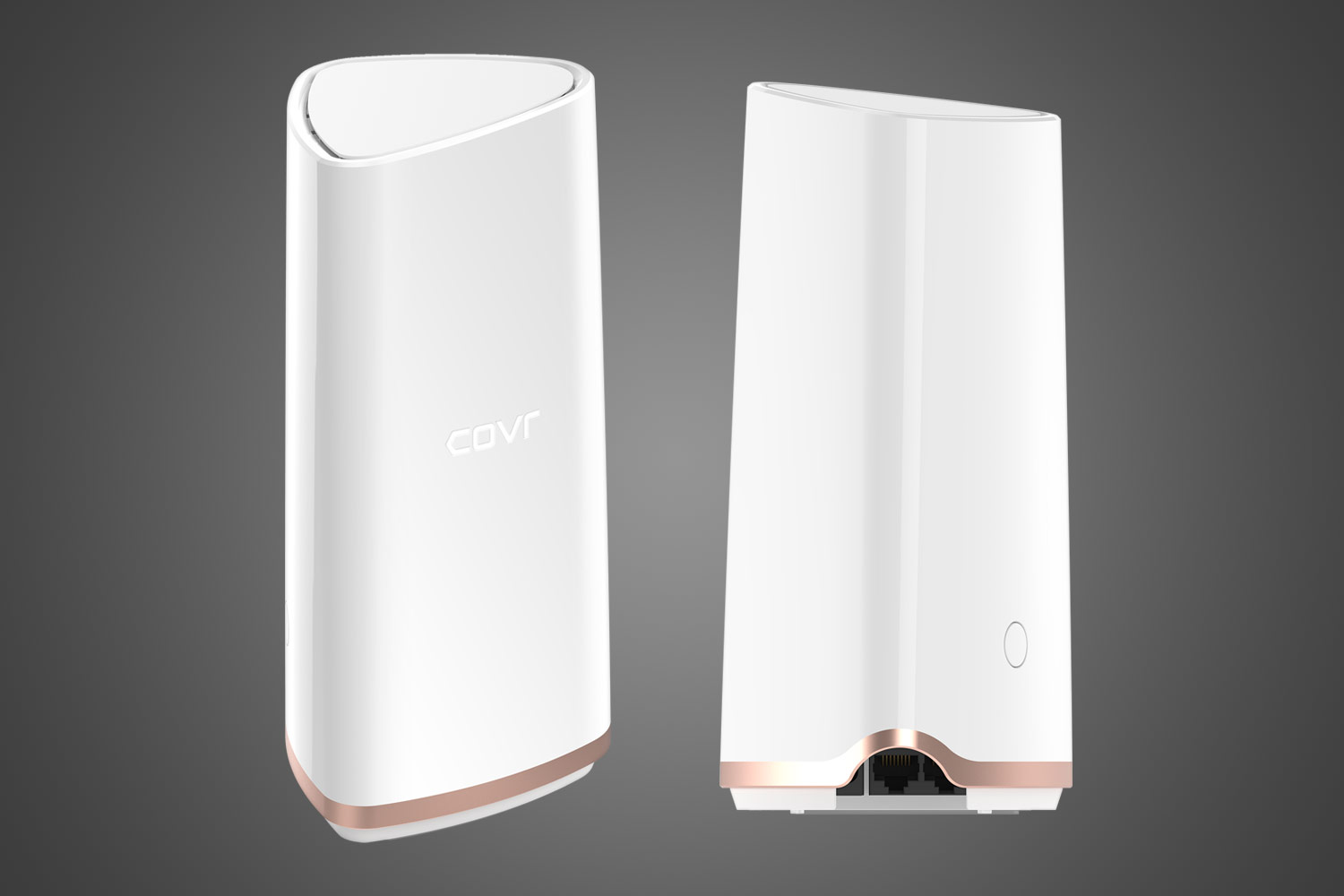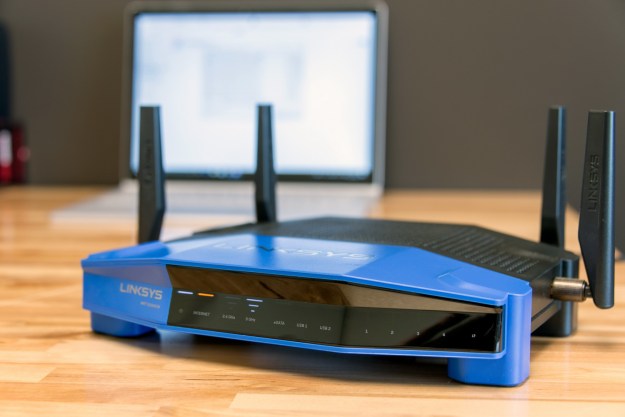Two distinct Covr models will be available: The dual-band COVR-C1203 and the tri-band COVR-2202. The dual-band system uses three units to extend Wi-Fi coverage up to 5,000 square feet, while the tri-band system needs just two units to cover up to 6,000 square feet. The former transmits using the AC1200 standard, while the latter uses the faster AC2200. Both feature MU-MIMO technology to handle large groups of users.
The COVR-C1203 is slated to be available in first quarter 2018 for $250, while the COVR-2202 won’t be available until second quarter with a price of $320.
802.11ax Wi-Fi is here
If speed, rather than coverage, is more your thing, then D-Link also has you covered with the dual-band AX6000 and tri-band AX11000 Wi-Fi routers utilizing the latest 802.11ax standard. Named for their data rates, the former can hit combined speeds of 6,000 megabits per second (Mbps) while the later surges to an impressive 11,000Mbps. These routers are designed for “high density areas where you need to get your Wi-Fi connectivity, according to Raman Bridwell, vice president of products for D-Link. To accomplish this, the AX11000 is equipped with dual 2.5GB WAN ports.
With eight antennas extending from their angular bodies, both routers feature the futuristic, alien space ship design that D-Link has been known for for some time now, but we don’t expect anyone would be unhappy if one of these new models invaded their home. D-Link hasn’t yet announced pricing on either model, but has stated they will be available in the second half of this year.
Automated security to guard your smart home
The Internet of Things has turned mundane objects like refrigerators and door locks into high-tech gadgets of desire, but the more devices we connect to our routers, the greater we risk exposing ourselves to hackers. As more people turn to smart cameras and smart lights to protect their homes, a new question of security arises: What’s protecting those devices?
D-Link hopes the answer is the company’s new McAfee-powered AC2600 Wi-Fi router. With support for 128 connected devices, the AC2600 is designed to handle a home full of smartphones, tablets, computers, and IoT devices. Thanks to McAfee’s Global Threat Intelligence, it uses machine learning to detect and prevent malware and other malicious attacks.
Gary Davis, chief consumer security evangelist at McAfee, explained that the router is “the simplest approach to securing everything in your house. You buy the D-Link device, plug it in, turn it on, and you’re automatically protected.”
The cube-shaped router appears to take design influence from a safe, which would make sense, and will be available in second quarter 2018 for $250.
Editors' Recommendations
- How to change your router’s Wi-Fi password
- Linksys’ new dual-band Wi-Fi 6 routers are surprisingly affordable
- TP-Link’s Wi-Fi 6E router comes with motorized antennas for better reception
- 4 things you can do right now to prep your Wi-Fi network for holiday houseguests
- Wi-Fi 7 is coming to CES 2022 with promises of even faster speeds

